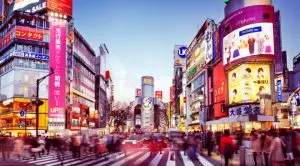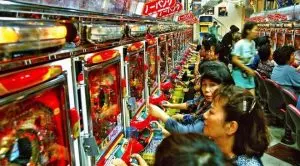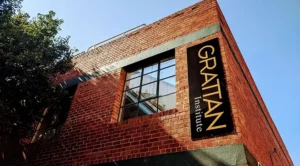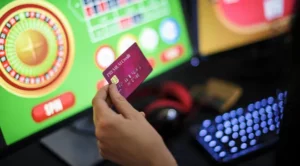 Despite the fact that pachinko has long been one of the favourite pastimes for Japanese people and the industry has been flourishing, with a literally mind-blowing amount of money being spent on the game by local gamblers every year, business is quieter these days. Once full of energy and life, the pachinko parlours now see a decline, ageing clientèle and stricter regulation.
Despite the fact that pachinko has long been one of the favourite pastimes for Japanese people and the industry has been flourishing, with a literally mind-blowing amount of money being spent on the game by local gamblers every year, business is quieter these days. Once full of energy and life, the pachinko parlours now see a decline, ageing clientèle and stricter regulation.
It was only recently when Japan finally opened the door to casino gambling as part of so-called integrated casino resorts. Some have claimed that the expansion of the country’s gambling market would boost the gambling participation rates, as well as the rates of gambling addiction in the country. However, it is not the opening of the new gambling sector, but new restrictions that hit pachinko hard in 2018.
The regulatory rules aimed at tackling problem gambling and gambling-related harm came as part of a policy exchange which played an important role in opening the Japanese casino market by lifting the nationwide ban on casinos in 2016, regardless of strong opposition. The Diet has been working on the new regulations on the casino industry since then until finally giving the green light to casino gambling and passing the regulations in July. The new piece of legislation passed by the Diet also included rules associated with problem gambling.
However, the recently unveiled regulation affected not only the newly-opened casino gambling market of the country but the already existing pachinko sector, too.
As far as gambling addiction is concerned, a Government survey which was carried out in 2017 found that 3.6% of the Japanese people have been categorised as problem gamblers at some point, with the percentage rate being higher than the 1%-2% average in other developed countries.
Japanese Pachinko Halls Need to Comply with New Rules
 The new rules aimed at reduction of gambling addiction call for pachinko machines to cut their payouts, which basically means that players are about to generate both winnings and losses not as fast as they were in the near past. This, on the other hand, would probably make the game less addictive, but less attractive, too.
The new rules aimed at reduction of gambling addiction call for pachinko machines to cut their payouts, which basically means that players are about to generate both winnings and losses not as fast as they were in the near past. This, on the other hand, would probably make the game less addictive, but less attractive, too.
Pachinko parlours are required to make sure they get in line with the new rules over the upcoming three years, with owners of such halls having shared their concerns not only about the overall costs of replacing the existing machines but also with the negative effect that such changes could have on their business, saying that regular customers could find the new games less exciting. For the time being, operators of pachinko halls are already spending an amount worth about ¥1 trillion on new machines, which cost between ¥400,000 and ¥500,000 every year.
According to some owners of establishments offering pachinko machines, the whole point of lifting the nationwide ban on casino gambling was to bring fresh money to regional finances. However, they say that the pachinko industry would be the one suffering the major blow.
As mentioned above, the pachinko industry has already been suffering a certain decline because of the country’s ageing population. According to the Japan Productivity Centre, the existing pachinko industry has been reduced from approximately ¥30 trillion ten years ago, to about ¥20 trillion to date. Recent data from the National Policy Agency, which is engaged in regulating the industry, showed that the number of pachinko parlours has also suffered a decline, as it has been reduced from more than 17,000 about 20 years ago, to about 9,600 now.
- Author


